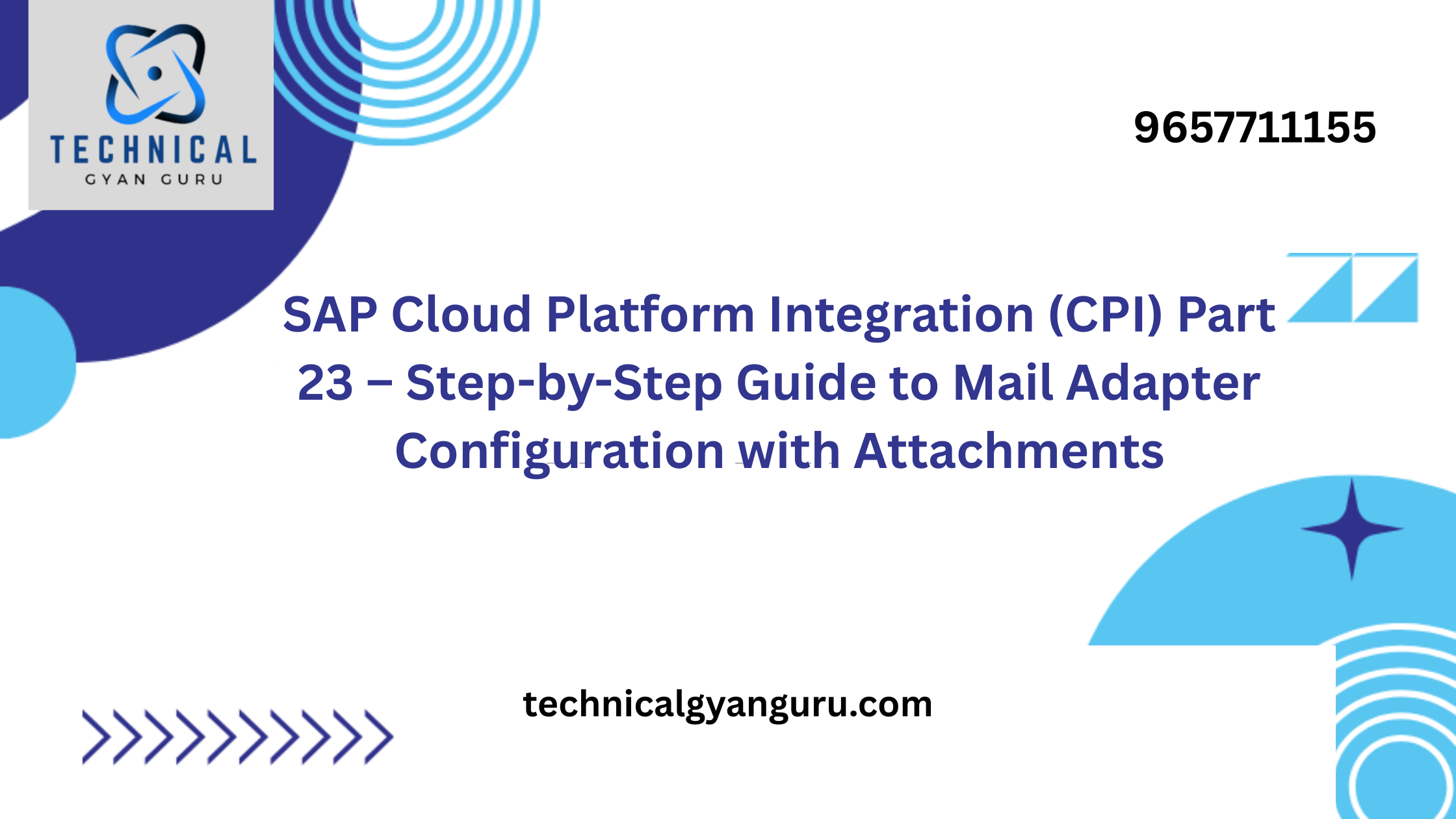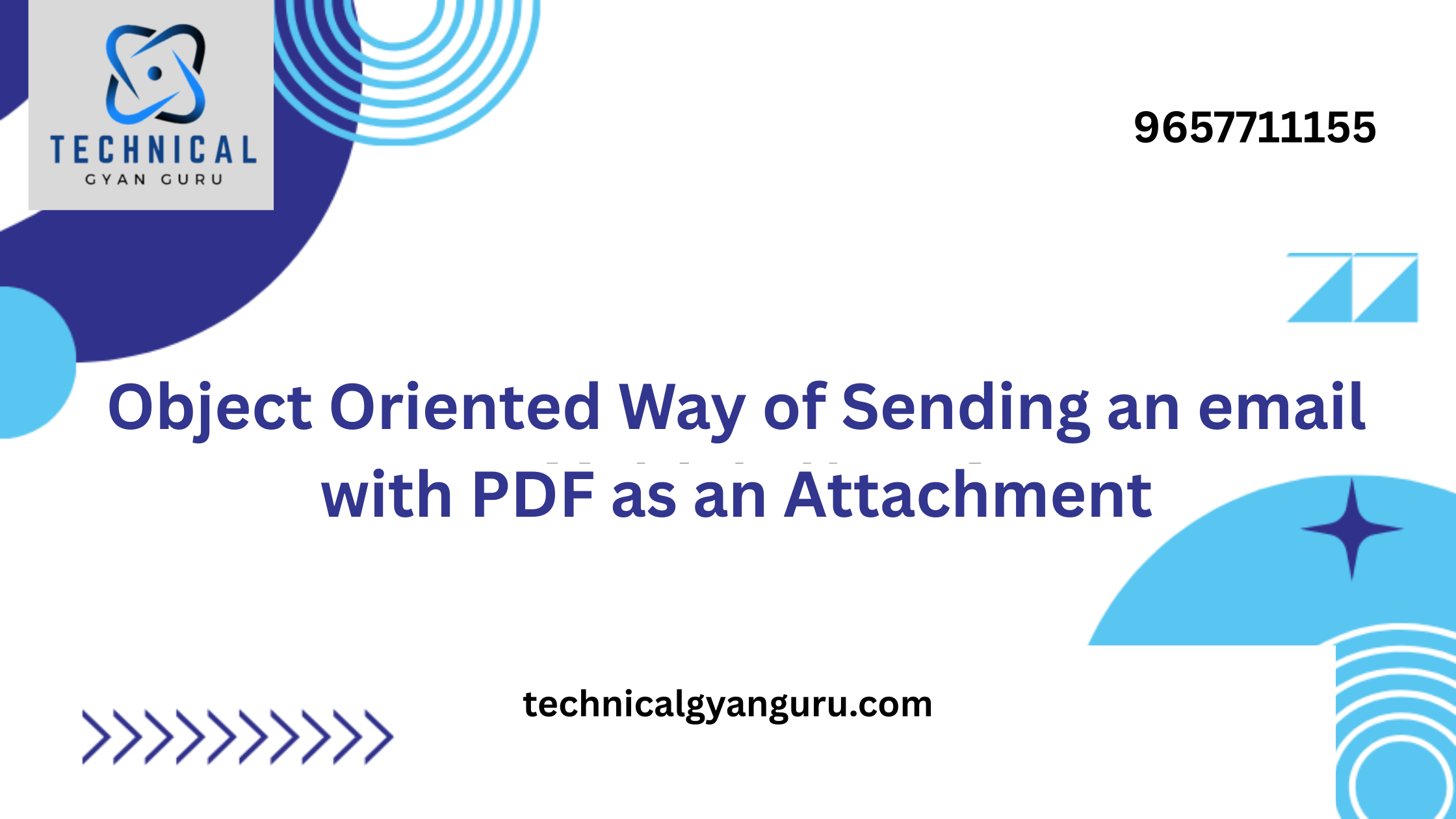
Definition of Creating an IDoc File on SAP Application Server
Considered sharing the archive production of IDOC ( MBGMCR03 ) from Application server in the event that anybody needs this for their necessities:
Steps involved :
1) WE42 –> Create Inbound Process Code say “ZMATDOC”.
i) Assign FM “BAPI_IDOC_INPUT1″ with ALE option as ” Processing with ALE service” and ” Processing by Function Module”
ii) Assign Standard Message type MBGMCR to Process Code.
iii) Assign Message Function as “MOD”
2) SM30 –> Maintain Entry in TBD52 for Process code ZMATDOC to a FM “ BAPI_IDOC_INPUT1” and Object type “BUS2017”.
3) WE57 –> Assign FM to Message type and IDOC Type
BAPI_IDOC_INPUT1 +FM +MBGMCR03+MBGMCR+Inbound+Post goods movements with MB_CREATE_GOODS_MOVEMENT
4) Maintain Partner profiles WE20 ( Client Dependent ) for LS XXXCLNT001 for Inbound Parameters Message type MBGMCR and assign Process Code ZMATDOC
5) Create a custom program to read file from Application server and append to GT_INPUT Internal table and here is the sample code for creation of IDOC .
PERFORM upload_application_file.
*Create IDOC using File
read table gt_input into gs_input INDEX 1.
if sy–subrc eq 0.
else.
exit.
endif.
if gt_input[] is not INITIAL.
PERFORM create_idoc TABLES gt_input.
endif.
*Local data declaration
data: l_wa_control_records type edidc, “#EC NEEDED
l_i_control_records type standard table of edidc initial size 0,
v_process_data TYPE TEDE2.
clear: wa_edidc,
v_process_data,
gs_input.
loop at gt_input into gs_input.
**Populate control data
perform sub_pop_control_dat.
*
*Populate data record
perform sub_poulate_data_record.
*
**Populate the master record in sequence as basic type /IRM/AGRMNTS01
* perform sub_populate_i_edidd_seq.
clear wa_edidc–docnum.
CALL FUNCTION ‘IDOC_WRITE_AND_START_INBOUND’
EXPORTING
I_EDIDC = wa_edidc
DO_COMMIT = ‘X’
IMPORTING
DOCNUM = wa_edidc–DOCNUM
* ERROR_BEFORE_CALL_APPLICATION =
TABLES
I_EDIDD = i_edidd
EXCEPTIONS
IDOC_NOT_SAVED = 1
OTHERS = 2
.
IF SY–SUBRC <> 0.
MESSAGE ID SY–MSGID TYPE SY–MSGTY NUMBER SY–MSGNO
WITH SY–MSGV1 SY–MSGV2 SY–MSGV3 SY–MSGV4.
else.
COMMIT WORK.
ENDIF.
FORM SUB_POP_CONTROL_DAT .
* Fill Control Segment
Data : LV_PORT(10) type c.
CONCATENATE SY–SYSID ‘CLNT’ SY–MANDT into lv_port.
CONDENSE lv_port NO–GAPS.
clear wa_edidc.
wa_edidc–mandt = sy–mandt.
wa_edidc–docrel = sy–saprl.
wa_edidc–direct = ‘2’.
wa_edidc–rcvpor = ‘ ‘.
wa_edidc–rcvprt = ‘ ‘.
wa_edidc–rcvprn = ‘ ‘.
wa_edidc–test = ‘ ‘.
wa_edidc–sndpor = lv_port. “‘XXXCLNT001’
wa_edidc–sndprt = ‘LS’.
wa_edidc–SNDPFC = ‘LS’.
wa_edidc–sndprn = lv_port. “‘XXXCLNT001’
wa_edidc–mestyp = ‘MBGMCR’.
wa_edidc–IDOCTP = ‘MBGMCR03’. .
wa_edidc–mesfct = ‘MOD’.
wa_edidc–RCVPRT = ‘LS’.
wa_edidc–RCVPRN = LV_PORT.
wa_edidc–RCVPRT = ‘LS’.
ENDFORM. ” SUB_POP_CONTROL_DAT
FORM SUB_POULATE_DATA_RECORD .
clear wa_edidd.
clear i_edidd.
E1MBGMCR–TESTRUN = p_run. ( Selection screen Check Box )
wa_edidd–mandt = sy–mandt.
wa_edidd–segnam = ‘E1MBGMCR’.
wa_edidd–sdata = E1MBGMCR.
APPEND wa_edidd to i_edidd.
* Fill data segments
clear stl_head.
stl_head–PSTNG_DATE = sy–datum.
stl_head–HEADER_TXT = gs_input–BKTXT.
stl_head–DOC_DATE = sy–datum.
wa_edidd–mandt = sy–mandt.
wa_edidd–segnam = ‘E1BP2017_GM_HEAD_01’.
wa_edidd–sdata = stl_head.
APPEND wa_edidd to i_edidd.
clear stl_gmcode.
stl_gmcode–gm_code = ’03’.
wa_edidd–mandt = sy–mandt.
wa_edidd–segnam = ‘E1BP2017_GM_CODE’.
wa_edidd–sdata = stl_gmcode.
APPEND wa_edidd to i_edidd.
clear stl_item.
stl_item–MATERIAL = gs_input–MATNR.
stl_item–PLANT = gs_input-WERKS.
CALL FUNCTION ‘CONVERSION_EXIT_ALPHA_INPUT’
EXPORTING
INPUT = gs_input–kostl
IMPORTING
OUTPUT = gs_input–kostl.
stl_item–COSTCENTER = gs_input–kostl.
stl_item–STGE_LOC = gs_input–LGORT.
stl_item–BATCH = gs_input–CHARG.
stl_item–MOVE_TYPE = gs_input–BWART.
stl_item–ENTRY_QNT = gs_input–MENGE.
wa_edidd–mandt = sy–mandt.
wa_edidd–segnam = ‘E1BP2017_GM_ITEM_CREATE’.“ZGM_ITEM’.
wa_edidd–sdata = stl_item.
APPEND wa_edidd to i_edidd.
ENDFORM. ” SUB_POULATE_DATA_RECORD
Creating an SAP IDoc Reader connection
- Click Administrator Connections, and then click New Connection to create a connection.The New Connection page appears.
- Enter a name for the SAP IDoc Reader connection.Connection names can contain alphanumeric characters, spaces, and the following special characters: _ . + -Connection names are not case sensitive.
- Enter a description for the connection.The description can have a maximum length of 255 characters.
- Select SAP as the connection type.The SAP Connection Properties section appears.
- Select the name of the runtime environment where you want to run the tasks.
- Select iDoc Reader as the SAP connection type.The iDoc Reader Connection Properties section appears.
- Enter the destination entry that you specified in the sapnwrfc.ini file for the RFC server program registered at an SAP gateway.The Program ID for this destination entry must be the same as the Program ID for the logical system you defined in SAP to receive IDocs.
- Select UTF-8 as the code page compatible with the SAP source.
- Click Test Connection to test the connection.
- Click Save to save the connection.
Creating an IDoc File on SAP Application Server: Unveiling Powerful Features
Features of IDoc Files on SAP Application Server
Robust Data Transfer
One of the standout features of IDoc files is their ability to facilitate robust data transfer. The structured format ensures that information is transmitted accurately, reducing the risk of data corruption or loss.
Real-time Monitoring
IDoc files offer real-time monitoring capabilities, allowing users to track the status of data transfer processes. This transparency is crucial for maintaining control over critical business data.
Error Handling
In the event of data discrepancies or transmission errors, IDoc files provide robust error-handling mechanisms. This ensures that issues are identified and addressed promptly, preventing potential disruptions in business operations.
Advantages of Using IDoc Files
Seamless Integration
The seamless integration capabilities of IDoc files make them indispensable in SAP environments. They serve as the glue that binds different systems together, enabling smooth communication and collaboration.
Data Consistency
IDoc files contribute significantly to maintaining data consistency across diverse systems. By adhering to a standardized format, these files ensure that information is interpreted uniformly, eliminating discrepancies.
Best Practices for IDoc File Creation
Data Validation
Prioritize data validation during the IDoc creation process. Implement checks to ensure that the information being transferred is accurate, valid, and aligns with the intended structure.
Error Prevention
Proactively incorporate measures to prevent errors during IDoc file creation. This includes thorough testing, validation checks, and continuous monitoring of the data transfer process.
Troubleshooting Common Issues
Error Messages
In the troubleshooting journey, understanding common error messages is key. Equip yourself with the knowledge to decipher error messages and take corrective actions promptly.
Debugging Techniques
Utilize debugging techniques to identify and resolve issues within the IDoc creation process. This hands-on approach can expedite the troubleshooting process.
Security Measures for IDoc Files
Access Controls
Implement stringent access controls to restrict unauthorized access to IDoc files. Define roles and permissions meticulously to safeguard sensitive business information.
Encryption
Enhance the security of IDoc files by implementing encryption measures. This adds an extra layer of protection, especially when dealing with confidential or sensitive data.
Future Developments in IDoc Technology
Enhanced Integration Capabilities
The future of IDoc technology is poised for enhanced integration capabilities. Expect advancements that further streamline communication between SAP and external systems.
Automation Trends
Automation will play a pivotal role in the evolution of IDoc technology. Anticipate trends that focus on automating the IDoc creation and monitoring processes, enhancing overall efficiency.
Success Stories
Explore success stories where organizations have leveraged IDoc files to optimize their business processes. These real-world examples underscore the transformative impact of efficient data exchange.
Case Studies
Dive into detailed case studies that illustrate the practical application of creating IDoc files on the SAP Application Server. Learn from real-world scenarios and understand how businesses have overcome challenges.
Industry Adoption of IDoc Files
Examine the widespread adoption of IDoc files across various industries. Understand how different sectors leverage this technology to streamline operations and enhance data reliability.
Conclusion of Creating an IDoc File on SAP Application Server
In conclusion, the creation of IDoc files on the SAP Application Server is a pivotal process that empowers businesses with seamless data transfer capabilities. The robust features, coupled with best practices and security measures, make IDoc files indispensable in the SAP landscape. As we look ahead, the evolution of IDoc technology promises even greater integration capabilities and automation trends, further solidifying its role in shaping the future of SAP communication.
FAQs (Creating an IDoc File on SAP Application Server)
Can I create IDoc files without prior SAP experience? While basic SAP knowledge is beneficial, creating IDoc files may require specialized training. Consider seeking guidance from SAP experts.
How often should I monitor IDoc file transfers? Regular monitoring is recommended to address issues promptly. The frequency depends on the volume and criticality of data transfers.
Are there industry-specific considerations for IDoc file creation? Yes, industries may have unique requirements. Tailor your IDoc creation process to align with specific business needs.
What encryption methods are commonly used for securing IDoc files? AES (Advanced Encryption Standard) is a commonly used encryption method for securing IDoc files.
Can IDoc files be used for real-time data transfer between SAP and non-SAP systems? Yes, IDoc files facilitate real-time data transfer and integration between SAP and non-SAP systems.







